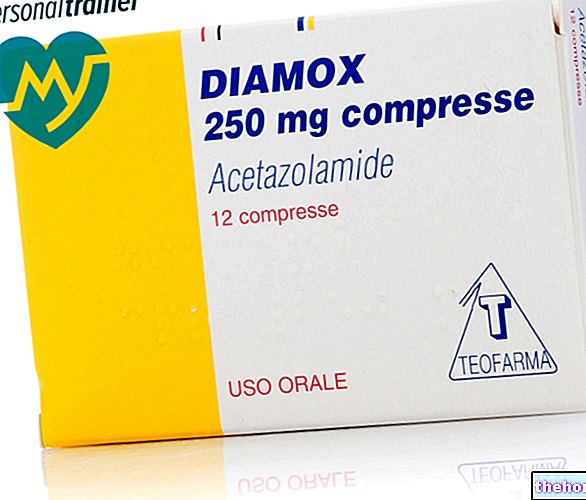Active ingredients: Hydrocortisone acetate
HYDROCORTISONE ACETATE DYNACREN -1% cream, tube of 30 g
Why is Hydrocortisone Acetate used - Generic Drug? What is it for?
PHARMACOTHERAPEUTIC CATEGORY: Dermatologicals, corticosteroids.
THERAPEUTIC INDICATIONS: Insect bites, itching, erythema and eczema.
Contraindications When Hydrocortisone Acetate Should Not Be Used - Generic drug
Hypersensitivity to the active substance or to any of the excipients. In case of viral (eg cutaneous tuberculosis, herpes simplex, chicken pox), bacterial and fungal diseases.
Precautions for use What you need to know before taking Hydrocortisone acetate - Generic drug
General: Systemic absorption of topical corticosteroids may produce reversible suppression of the adrenal-hypothalamohypophyseal (HPA) axis, with the possibility of glucocorticosteroid insufficiency after discontinuation of treatment.
In some patients, manifestations of Cushing's syndrome may also occur following systemic absorption of corticosteroids during treatment. Patients receiving high amounts of particularly active topical steroids applied to large skin areas should be evaluated periodically in order to detect the suppression of the adrenal-hypothalamus-pituitary axis. If suppression of the adrenal-hypothalamus-pituitary axis occurs, an attempt should be made to discontinue the drug, reduce the frequency of applications or replace it with another less potent corticosteroid.
Recovery of HPA axis function is usually rapid and complete once the drug is discontinued. Deprivation symptoms may sometimes occur, requiring systemic corticosteroid supplementation.
If, during the use of the medicinal product, skin irritation occurs (rash, irritation and burning phenomena), the treatment must be interrupted and an appropriate therapy instituted.
It is good practice to avoid prolonged use of hydrocortisone acetate, especially on large surfaces.
The cutaneous application of cortisone in the treatment of extended dermatoses and for prolonged periods can cause systemic absorption; this occurrence occurs more easily when the occlusive bandage is used.
In infants, the diaper can act as an occlusive dressing. In any case, given the physico-chemical characteristics of the preparation it is not required and it is not recommended to apply it with an occlusive bandage.
The use, especially if prolonged, of medicines for local use can give rise to sensitization phenomena. In this case, suspend the treatment and institute a suitable therapy. As with all cortisone preparations for local use with high activity, the treatment should be interrupted as soon as control of the dermopathy was achieved.
Use in pediatrics: pediatric patients may prove to be more sensitive than adults to depression of the adrenal-hypothalamo-pituitary axis induced by topical corticosteroids and by the effects of exogenous corticosteroids, given the greater absorption due to the high ratio of skin surface to body weight. In children under 2 years of age, the use of hydrocortisone acetate must be carefully evaluated by the physician in relation to the risk / benefit ratio.
Interactions Which drugs or foods can modify the effect of Hydrocortisone Acetate - Generic drug
Tell your doctor or pharmacist if you have recently taken any other medicines, even those without a prescription. Local administration of hydrocortisone acetate, especially for applications on large skin areas or for long periods, can cause phenomena of systemic activity such as glycosuria and postprandial hyperglycemia.
Barbiturates, antihistamines and diphenylhydantoin, by inducing an increase in the metabolism of the steroid, reduce its pharmacological activity.
Anti-inflammatories, such as salicylates and phenylbutazone, by displacing the steroid from its binding to plasma proteins, increase its activity. Oral hypoglycemic agents and insulin are counteracted in their action by the increase in glycaemia induced by the steroid due to its intense glyconeogenetic and glycogenolytic activity.
Warnings It is important to know that:
Hydrocortisone acetate is for external use only and not for ophthalmic use. Do not apply on mucous membranes. Avoid contact with eyes.
After a short period of treatment with no appreciable results, discontinue corticosteroid treatment and consult your doctor.
Pregnancy and breastfeeding
Ask your doctor for advice before taking any medicine.
In the absence of specific data, the use of hydrocortisone acetate in pregnancy and during lactation must be carefully evaluated by the physician in relation to the risk / benefit ratio.
Effects on ability to drive and use machines
Hydrocortisone acetate does not affect alertness; therefore it does not affect the ability to drive or use machines.
Important information about some of the excipients
The product contains p-hydroxybenzoates, which can cause allergic reactions (sometimes delayed).
Dosage and method of use How to use Hydrocortisone acetate - Generic drug: Posology
Spread the cream on the affected part in a thin layer, twice a day, rubbing lightly. Do not exceed the recommended dose.
Overdose What to do if you have taken an overdose of Hydrocortisone Acetate - Generic Medication
Excessively prolonged use of topical corticosteroids can depress the pituitary-adrenal axis (HPE), causing secondary adrenal insufficiency. If suppression of the HPE axis occurs, attempts should be made to discontinue the drug, reduce its frequency of applications, or replace it with another less potent corticosteroid. Hypercorticoid symptoms are effectively reversible spontaneously. Treatment is symptomatic. If necessary, hypercorticoidism symptoms are reversible. rebalance the hydro-electrolyte balance.
In case of chronic toxicity, slowly remove the corticosteroid from the body.
In case of accidental ingestion / intake of an excessive dose of Hydrocortisone Acetate Dynacren, notify your doctor immediately or go to the nearest hospital.
If you have any questions about the use of Hydrocortisone Acetate Dynacren ask your doctor or pharmacist.
Side Effects What are the side effects of Hydrocortisone Acetate - Generic Drug
Like all medicines, hydrocortisone acetate can cause side effects, although not everybody gets them. Below are the side effects of hydrocortisone. Insufficient data are available to establish the frequency of the individual effects listed.
As with all preparations for local use, local sensitization reactions may occur. The following have been reported: burning sensation, itching, irritation, dryness of the skin, skin atrophy, acne eruption, hypopigmentation, atrophy and striae localized to the intertriginous areas treated for long periods of time, especially if with occlusive dressing.
Compliance with the instructions contained in the package leaflet reduces the risk of undesirable effects.
If any of the side effects gets serious, or if you notice any side effects not listed in this leaflet, please inform your doctor or pharmacist.
Expiry and Retention
Expiry: see the expiry date indicated on the package. The expiry date refers to the unopened, correctly stored medicine. After the first opening of the container, the medicinal product must be used within the expiry date. After this period, the residual medicinal product must be discarded.
WARNING: do not use the medicine after the expiry date indicated on the package.
Keep in the original package tightly closed to protect the medicine from light. Medicines should not be disposed of via wastewater or household waste. Ask your pharmacist how to dispose of medicines you no longer use. This will help protect the environment.
Keep this medicine out of the reach and sight of children.
Other Information
100 g of cream contain:
Active ingredient: Hydrocortisone acetate 1.0 g.
Excipients: polyglycolic esters of C12 and C20 fatty acids, glycerol monostearate, squalane, cetyl palmitate, methyl p-hydroxybenzoate, propyl p-hydroxybenzoate, purified water.
PHARMACEUTICAL FORM: Cream, 30 g tube.
Source Package Leaflet: AIFA (Italian Medicines Agency). Content published in January 2016. The information present may not be up-to-date.
To have access to the most up-to-date version, it is advisable to access the AIFA (Italian Medicines Agency) website. Disclaimer and useful information.
01.0 NAME OF THE MEDICINAL PRODUCT
HYDROCORTISONE ACETATE DYNACREN 1% CREAM
02.0 QUALITATIVE AND QUANTITATIVE COMPOSITION
100 g of cream contain
Active ingredient: hydrocortisone acetate 1.0 g
For the full list of excipients, see section 6.1.
03.0 PHARMACEUTICAL FORM
Cream
04.0 CLINICAL INFORMATION
04.1 Therapeutic indications
Insect bites, itching, rashes and eczema.
04.2 Posology and method of administration
Spread the cream on the affected part in a thin layer, twice a day, rubbing lightly.
04.3 Contraindications
Hypersensitivity to the active substance or to any of the excipients.
In case of viral (eg cutaneous tuberculosis, herpes simplex, chicken pox), bacterial and fungal diseases.
04.4 Special warnings and appropriate precautions for use
General: Systemic absorption of topical corticosteroids may produce reversible suppression of the adrenal-hypothalamus-pituitary (HPA) axis, with the possibility of glucocorticosteroid insufficiency after discontinuation of treatment. In some patients, manifestations of Cushing's syndrome may also occur following systemic absorption of corticosteroids during treatment. Patients receiving high amounts of particularly active topical steroids applied to large skin areas should be evaluated periodically in order to detect the suppression of the adrenal-hypothalamus-pituitary axis. If suppression of the adrenohypothalamic-pituitary axis occurs, an attempt should be made to discontinue the drug, reduce its frequency of applications, or replace it with another less potent corticosteroid. Restoration of HPA axis function is usually quick and complete once ceased the drug.
Deprivation symptoms may sometimes occur, requiring supplemental systemic corticosteroids.
If, during the use of the medicinal product, skin irritation occurs (rash, irritation and burning phenomena), the treatment must be interrupted and an appropriate therapy instituted.
It is good practice to avoid prolonged use of hydrocortisone acetate, especially on large surfaces.
The cutaneous application of cortisone in the treatment of extended dermatoses and for prolonged periods can cause systemic absorption; this occurrence occurs more easily when the occlusive bandage is used. In newborns, the diaper can act as an occlusive bandage.
In any case, given the physico-chemical characteristics of the preparation it is not required and it is not recommended to apply it with an occlusive bandage.
The use, especially if prolonged, of medicines for local use can give rise to sensitization phenomena.
In this case, suspend the treatment and institute a suitable therapy.
As with all cortisone preparations for local use with high activity, the treatment should be stopped as soon as control of the dermopathy is achieved.
Hydrocortisone acetate is for external use only and not for ophthalmic use. Do not apply on mucous membranes. Avoid contact with eyes.
If unsuccessful, discontinue corticosteroid treatment.
Use in pediatrics: pediatric patients may prove to be more sensitive than adults to the depression of the adrenal-hypothalamic-pituitary axis induced by topical corticosteroids and by the effects of exogenous corticosteroids, given the greater absorption due to the high ratio of skin surface to body weight.
Depression of the adrenal-hypothalamic pituitary axis, Cushing's syndrome and intracranial hypertension have been described in children treated with topical corticosteroids. Manifestations of intracranial hypertension include fontanel tension, headache, and bilateral papilledema.
In children under 2 years of age, the use of hydrocortisone acetate must be carefully evaluated by the physician in relation to the risk / benefit ratio.
Important information about some of the ingredients:
the product contains para-hydroxy-benzoates which can cause allergic reactions (sometimes delayed).
04.5 Interactions with other medicinal products and other forms of interaction
Local administration of hydrocortisone acetate, especially for applications on large skin areas or for long periods, can cause phenomena of systemic activity such as glycosuria and postprandial hyperglycemia; moreover, in occlusion it can induce a decrease in urinary excretion of 17-KS and 17-OHCS.
Interaction phenomena with other drugs may also occur, mainly through mechanisms of enzymatic induction, displacement or opposite activity.
Barbiturates, antihistamines and diphenylhydantoin, by inducing an increase in the metabolization of the steroid, reduce its pharmacological activity.
Anti-inflammatories, such as salicylates and phenylbutazone, by displacing the steroid from its binding to plasma proteins, increase its activity.
Oral hypoglycemic agents and insulin are counteracted in their action by the increase in glycaemia induced by the steroid due to its intense glyconeogenetic and glycogenolytic activity.
04.6 Pregnancy and breastfeeding
Pregnancy: there are no adequate and well-controlled studies in pregnant women of the teratogenic potential of locally applied corticosteroids. Therefore, in women during pregnancy or breastfeeding and in very early childhood, the medicine should be administered in cases of real need and under the direct supervision of the doctor.
Feeding time: it is not known whether topical administration of corticosteroids can result in sufficient systemic absorption to produce measurable concentrations in breast milk. Systemically administered corticosteroids are secreted into breast milk in quantities that are unlikely to harm the infant. However, a decision must be made whether to discontinue the drug, taking into account the importance of the drug to the mother.
04.7 Effects on ability to drive and use machines
Hydrocortisone acetate does not affect alertness; therefore, it does not affect the ability to drive or use machines.
04.8 Undesirable effects
Below are the side effects of hydrocortisone. Insufficient data are available to establish the frequency of the individual effects listed.
As with all preparations for local use, local sensitization reactions may occur.
The following have been reported: burning sensation, itching, irritation, dryness of the skin, skin atrophy, acne eruption, hypopigmentation, atrophy and localized striae to the intertriginous areas treated for long periods of time especially if with occlusive dressing.
04.9 Overdose
Excessively prolonged use of topical corticosteroids can depress the pituitary-adrenal axis (HPE), causing secondary adrenal insufficiency. If HPE axis suppression occurs, an attempt should be made to discontinue the drug, reduce its frequency of applications, or replace it with another less potent corticosteroid. Hypercorticoid symptoms are in fact spontaneously reversible.
Treatment is symptomatic. If necessary, rebalance the hydro-electrolyte balance.
In case of chronic toxicity, slowly remove the corticosteroid from the body.
05.0 PHARMACOLOGICAL PROPERTIES
05.1 Pharmacodynamic properties
Medicinal product category: Dermatologicals, corticosteroids, category 1; ATC code: D07AA02.
Hydrocortisone or cortisol is a glucocorticoid steroid active for topical application on the skin, as it suppresses the inflammatory and allergic response, eliminating the clinical manifestations, without influencing the causes and the evolution of the pathological process that is responsible.
It also inhibits the synthesis of specific proteins with significance in chemotaxis and immunological reactions and modifies immune and macrophage functions.
05.2 Pharmacokinetic properties
Hydrocortisone is rapidly absorbed in the skin, especially in hairless areas. After topical application, only minimal quantities of the drug reach the dermal layer and, consequently, the systemic circulation; most of it remains localized in the more superficial layers of the skin. This eventuality comes to an end if a conspicuous part of the epidermis is destroyed in depth.
05.3 Preclinical safety data
Based on the results obtained from toxicity tests conducted on animals, in particular rats, a risk of fetal harm must be considered as probable. According to the AGS, hydrocortisone is not considered carcinogenic or mutagenic.
06.0 PHARMACEUTICAL INFORMATION
06.1 Excipients
Polyglycolic esters of C12 and C20 fatty acids, glycerol monostearate, squalane, cetyl palmitate, methyl and propyl p-hydroxybenzoates, purified water.
06.2 Incompatibility
Not known
06.3 Period of validity
Three years.
Shelf life after first opening: until the expiry date indicated on the package.
06.4 Special precautions for storage
Keep in the original package tightly closed to protect the medicine from heat.
06.5 Nature of the immediate packaging and contents of the package
Aluminum tube, internally coated with epoxy phenolic resins, painted externally, containing 30 g of product.
06.6 Instructions for use and handling
Unused medicine and waste derived from this medicine must be disposed of in accordance with local regulations.
07.0 MARKETING AUTHORIZATION HOLDER
DYNACREN Pharmaceutical Laboratory of Dr. A. Francioni and M. Gerosa s.r.l.
Via Pietro Nenni, 12 - 28053 CASTELLETTO TICINO (NO)
08.0 MARKETING AUTHORIZATION NUMBER
A.I.C. No. 029681018
09.0 DATE OF FIRST AUTHORIZATION OR RENEWAL OF THE AUTHORIZATION
Date of first authorization: 08/11/1993.
10.0 DATE OF REVISION OF THE TEXT
AIFA Resolution No. 1352 of 01/12/2011.




























